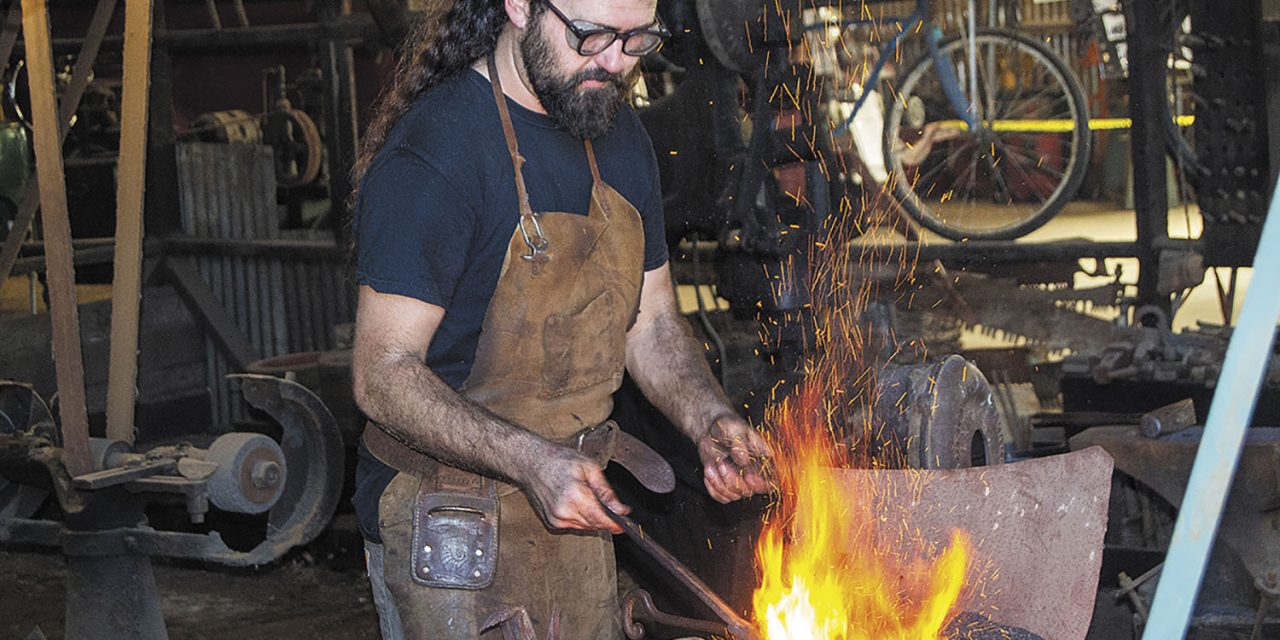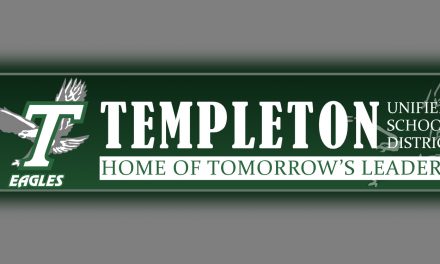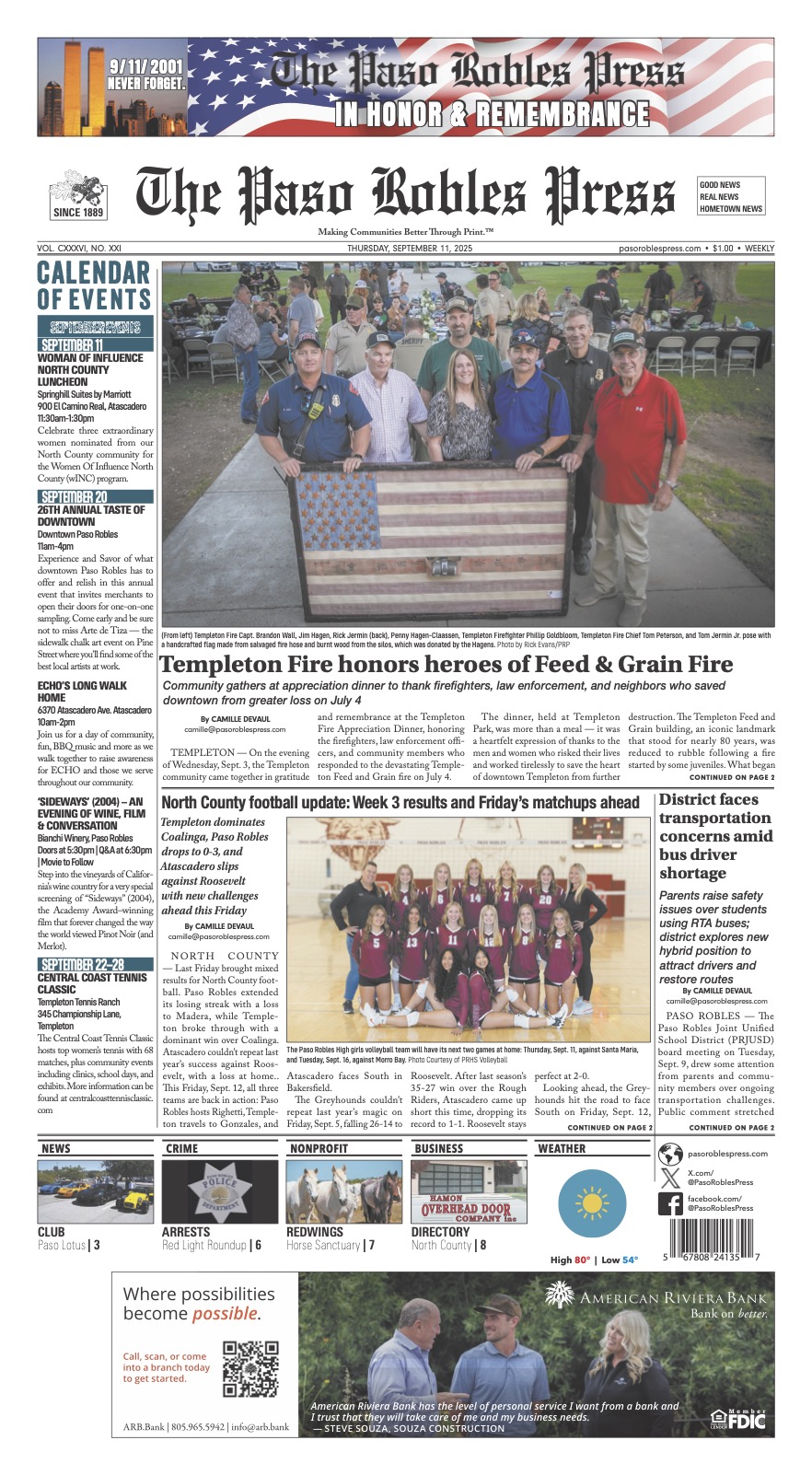TEMPLETON — It was fitting that Greg O’Sullivan talked about Templeton’s history while standing in the train station depot Saturday afternoon.
The Templeton Historical Museum Society volunteer explained Templeton was the last stop on the railroad from San Francisco for three years, 1886-1889, during his nearly 20-minute presentation during the Founder’s Day celebration on Nov. 16.
“The reason we call this Founder’s Day is because Nov. 20, which is just a few days from now, 1886, the first passenger train arrived just down the street from where we are behind Nino’s (Grill),” O’Sullivan said.
The museum is located at 309 Main St. and Nino’s is at 509 S. Main St. People walked through the museum’s three buildings — train depot, blacksmith shop and an old home — and climbed inside the restored 1933 Ford Templeton school bus. Classic cars were also parked in front of the museum.
Max Randolph, of Max Randolph Studios, gave an entertaining blacksmithing demonstration. In addition to O’Sullivan’s presentation, people could go on a walking tour of the historic downtown. Cake and pumpkin pie were also available
to everyone.

Before 1886, the area was home to Salinan Indians. Spain occupied the area in 1760 and Mexico took it over from Spain in 1820 and divided it into rancheros, “establishing the El Paso de Robles ranchero,” O’Sullivan said.
The railroad was trying to get a route from San Francisco to Los Angeles.
“They had San Francisco and they extended the railroad in stages,” O’Sullivan said. “They would stop at a place and put a turnstile and then continue building the railroad until they got to another place and put a turnstile and so on and so forth.”
In anticipation of the railroad coming, West Coast Land Company purchased 63,000 acres in the Templeton area. They subdivided and donated land to market it as a “civilized” town.
“That meant you needed to have a water source, you needed to have a newspaper, school, church and fire protection,” O’Sullivan said. “If you had those things you could say you were a sophisticated town.”
They donated land for a college, where T Hill is today; land for a fire station; land for the First Presbyterian Church (corner of Crocker and 6th streets); and started the Templeton Times newspaper.
“So we now have all of the elements of a civilized community,” O’Sullivan said, which all led to the train’s arrival and the town’s founding in 1886.
O’Sullivan covered mainly the first years of the town and also told the history of the Templeton Historical Museum Society, which was formed in the mid-1980s.
Much of Templeton’s history can be found in the pages of “End of the Line,” a book written by former U.S. Postmasters Carla and Al Willhoit. O’Sullivan, a former fire chief, also published a book about the history of Templeton’s fire department.
In 1988, the Willhoits donated the property the museum occupies today. The Al Horstman house was donated to the museum by the First Presbyterian Church and moved over in October of 1994. Four years later and after some remodeling, the museum opened to the public.
In 2001, Neil Willhoit left a significant amount of money to the historical society. The endowment, allowed THMS to renovate the train station depot and purchase the next door blacksmith shop.
Chronicling Templeton’s past and gathering its history has not been an easy task, according to O’Sullivan.
“Templeton was a blue-collar town, meaning they worked from sunup to sundown,” O’Sullivan said. “Nobody took the time to write down their history and take pictures and put aside artifacts. It gives you insight if you look around, the things that we have it is absolutely a blessing.”
The museum is staffed by volunteers Friday through Sunday from 1 to 4 p.m. For more information, visit templetonmuseum.com.
















